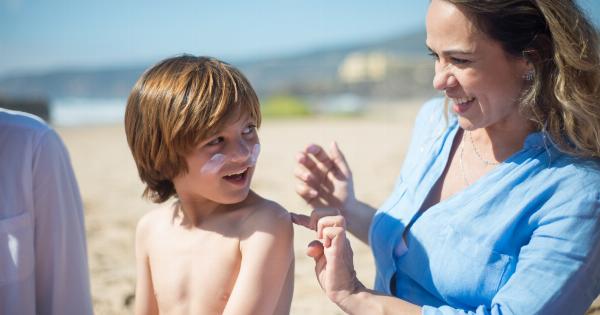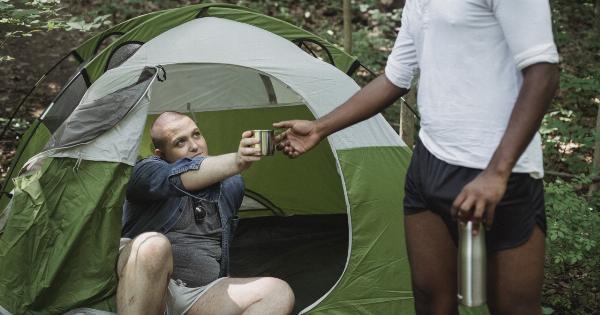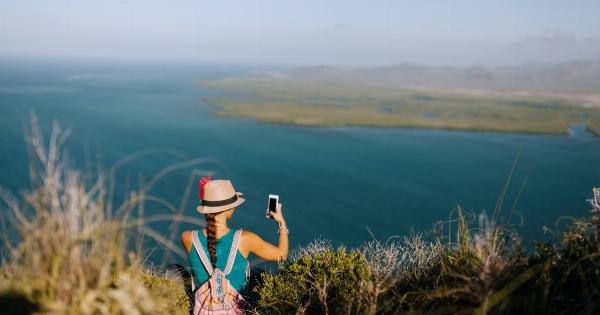As parents, our children’s well-being is our top priority. One of the most important things we can do to protect our children’s health is to keep their delicate skin safe from harmful sun rays.
Continuous exposure to the sun’s ultraviolet (UV) rays can quickly cause sunburn, rashes, and long-term skin damage. Here are a few essential tips to help you protect your child’s skin from the sun:.
Choose the Right Sunscreen
When it comes to choosing a sunscreen, it is essential to select the right one. Look for a sunscreen that has at least SPF 30. The higher the SPF, the greater the protection against harmful UV radiation.
Additionally, choose a sunscreen that uses zinc oxide or titanium dioxide as these ingredients provide better, safer protection than chemical sunscreens with active ingredients like oxybenzone or avobenzone.
Apply Sunscreen Correctly
Once you have a sunscreen that works for your child, it’s important to apply it correctly. Experts recommend applying sunscreen 15-30 minutes before exposure to the sun.
It’s also essential to re-apply sunscreen every 2 hours, as well as immediately after swimming or sweating. Apply generous amounts of sunscreen to all areas exposed to sunlight like the face, neck, arms, and legs. Don’t forget to apply to the ears, nose, and top of the feet, which are often missed areas.
Choose Protective Clothing
In addition to sunscreen, clothing can also safeguard children’s skin from harmful UV radiation. When spending time in the sun, encourage children to wear protective clothing like long-sleeve shirts and pants.
Choose clothing made from tightly woven fabrics that provide warming coverage, while also allowing children to stay cool and comfortable.
Timing is Everything
UV rays are at their strongest between the hours of 10 am and 4 pm. Be mindful of your children’s exposure to the sun during this time or schedule outdoor activities for earlier or later times in the day.
If your family is spending time in the sun for an extended period, make sure to take breaks in the shade to give your children’s skin time to recover.
Protect Your Baby’s Skin with Care
It’s especially essential to protect newborns from the sun. Babies have sensitive skin that can quickly burn and blister.
Keep babies under six months out of direct sunlight and dress them in lightweight outfits to keep them cool and protect their skin from the sun. Apply just a minimal amount of sunscreen to small areas of the baby’s skin. When using sunscreen, use fragrance-free lotions to avoid any allergic reactions.
Lead by Example
Children learn from what they see adults do. So, prioritize your skin’s protection to lead by example and underline the importance of taking care of your skin while spending time in the sun.
When children see adults making it a priority to protect their skin from the sun, it sends the message that there is value in sun protection.
Sun Safety On Other Days
The sun’s UV radiation can still affect children’s skin, even when it’s cloudy or raining.
On such days, it’s essential to continue applying sunscreen and taking measures to protect your child’s skin from harmful radiation.
The UV Index
The UV index forecast indicates the risks of exposure to UV radiation levels. Use the UV index forecast when making decisions about outdoor activities, especially during summertime and in areas with fewer clouds and higher altitudes.
When the UV index is high, encourage children to stay indoors or in shaded areas.
Know the Signs of Sunburn
Even with all these preventive measures, children can still develop sunburns. Sunburns can be itchy and incredibly uncomfortable, and they increase the risk of skin cancer. Identify the signs of sunburn like redness, pain, and blisters.
When you notice these signs, apply a soothing ointment or aloe vera gel to the affected areas, give your child plenty of fluids to drink, and keep them indoors until the sunburn heals.
Conclusion
Protecting your child’s skin from the sun is essential in preventing both short and long-term effects of sun exposure.
By choosing the right sunscreen, applying it correctly, and taking other measures such as picking the right clothing and staying indoors during peak UV radiation times, you can protect your child’s skin and teach them the importance of sun safety. Implement these tips today, and help your child enjoy a happy, healthy childhood without the dangers of unprotected sun exposure!.




























